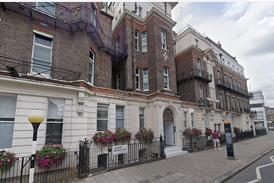School exclusions and human rights.
The Upper Tribunal (UT) has held that regulations under the Equality Act 2010 excluding people who have a ‘tendency to physical abuse’ from the protection of the act result in unlawful discrimination under article 14 of the European Convention on Human Rights insofar as they apply to children with impairments which give rise to an enhanced risk of physical aggression. In C & C v The Governing Body of a School, The Secretary of State for Education (First Interested Party) and The National Autistic Society (Second Interested Party) (SEN)[2018] UKUT 269 (AAC), Rowley J held that in accordance with section 3 of the Human Rights Act 1998, regulation 4(1)(c) of the Equality Act 2010 (Disability) Regulations 2010 ‘does not apply to children in education who have a recognised condition more likely to result in a tendency to physical abuse’.
The appeal concerned L, son of Mr and Mrs C, an 11-year-old with autism who was excluded from his primary school. The reason given was L’s aggressive behaviour. L’s parents appealed to the First-tier Tribunal (FTT) alleging disability discrimination. However the FTT held that L’s behaviour had amounted to a ‘tendency to physical abuse’ such that in relation to this behaviour he was not ‘disabled’ for the purposes of the Equality Act 2010. This meant that the school did not have to justify the decision to exclude L in terms of proportionality, or show that it had made reasonable adjustments before taking the decision to exclude.
The facts of L’s case are not uncommon – children with special educational needs account for half of all permanent school exclusions. Evidence from the National Autistic Society showed that, nationally, four out of 10 decisions to exclude children with autism were for physical assault against a teacher or pupil. Until this decision, those children were left without an effective means of challenging their exclusion due to the ‘tendency to physical abuse’ exemption.
The UT allowed L’s parents’ appeal on the basis that the FTT erred in applying regulation 4(1)(c) to L and treating him as not ‘disabled’. This was because applying the regulation to children with an impairment which is more likely to result in physical aggression gave rise to unlawful discrimination contrary to article 14 of the ECHR, read with the right to education in article 2 of the First Protocol (A2P1).
The appeal was defended by the secretary of state(SoS), who accepted that the issue was within the ‘scope or ambit’ of A2P1 and that L had a relevant ‘status’. They argued (1) that children such as L were not in an analogous position to other ‘disabled’ children who did not display a ‘tendency to physical abuse’; and (2) that in any event the differential impact of the regulations on children such as L was justified for public policy reasons. Both these submissions were rejected by the UT.
In considering whether or not the discriminatory impact of the regulation was justified, the UT considered the conventional four-stage test: does the measure have a legitimate aim sufficient to justify the limitation of a fundamental right? Is the measure rationally connected to that aim? Could a less intrusive measure have been used? Bearing in mind the severity of the consequences, the importance of the aim and the extent to which the measure will contribute to that aim, has fair balance been struck between the rights of the individual and the interests of the community?
In considering what weight and respect the tribunal should give to the justification put forward by the SoS, the UT confirmed that, in relation to the first three stages, the test should be one of ‘manifestly without reasonable foundation’ and found those stages had been satisfied.
On the fourth limb, it was agreed that the ‘manifestly without reasonable foundation test’ did not apply and the UT was required to decide the issue for itself, giving ‘appropriate respect’ to the justification provided by the SoS. However, Rowley J found she did not have the benefit of the ‘considered opinion’ of the SoS and there was no evidence there had been a proper consideration of the competing interests, and so she could only attach ‘very little weight’ to the SoS’s opinion. Rowley J therefore undertook her own analysis of the detriment caused by the regulations and whether it was justified. She found that the exemption came ‘nowhere near striking a fair balance between the rights of children such as L on the one side and the interests of the community on the other’. Recognising that ‘aggressive behaviour is not a choice for children with autism’ she held: ‘In my judgment the secretary of state has failed to justify maintaining in force a provision which excludes from the ambit of the protection of the Equality Act children whose behaviour in school is a manifestation of the very condition which calls for special educational provision to be made for them. In that context, to my mind it is repugnant to define as “criminal or anti-social” the effect of the behaviour of children whose condition (through no fault of their own) manifests itself in particular ways so as to justify treating them differently from children whose condition has other manifestations.’
It is important to note that this decision does not mean that schools are prevented from excluding violent children. However, schools will now need to show in all cases that the exclusion of a child who has been physically violent as a result of their disability is a proportionate response, taking into account the legitimate aim of protecting the needs, wellbeing and welfare of other pupils and staff, and importantly that reasonable adjustments have been made.
On remedy, the UT concluded it was permissible for regulation 4(1)(c) to be read and given effect to in a way that made it convention-compliant. It was therefore held that when read in accordance with section 3 of the Human Rights Act 1998, regulation 4(1)(c) does not apply to children in education who have a recognised condition that is more likely to result in a tendency to physical abuse. The UT also found that the regulation should be disapplied in the circumstances of this case.
The appeal was resolved on its facts by way of a confidential consent order agreed between the parties.
Polly Sweeney (partner at Irwin Mitchell) and Steve Broach (barrister at Monckton Chambers) acted for Mr & Mrs C



























No comments yet